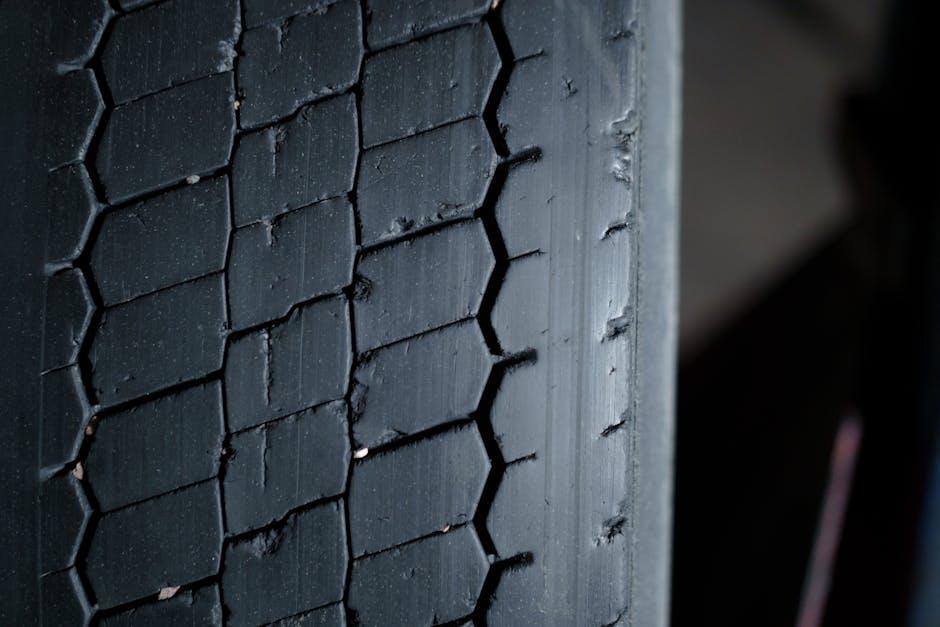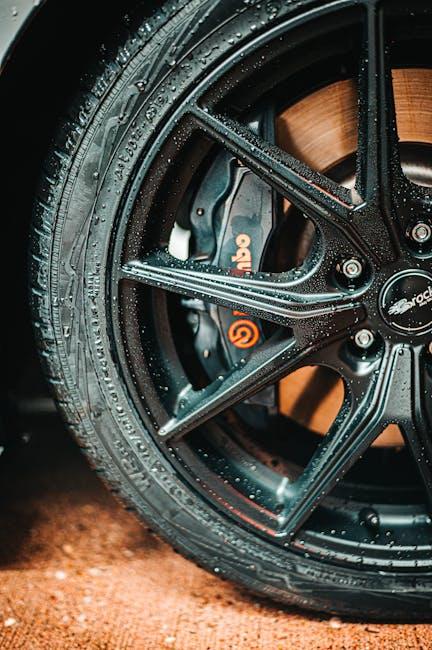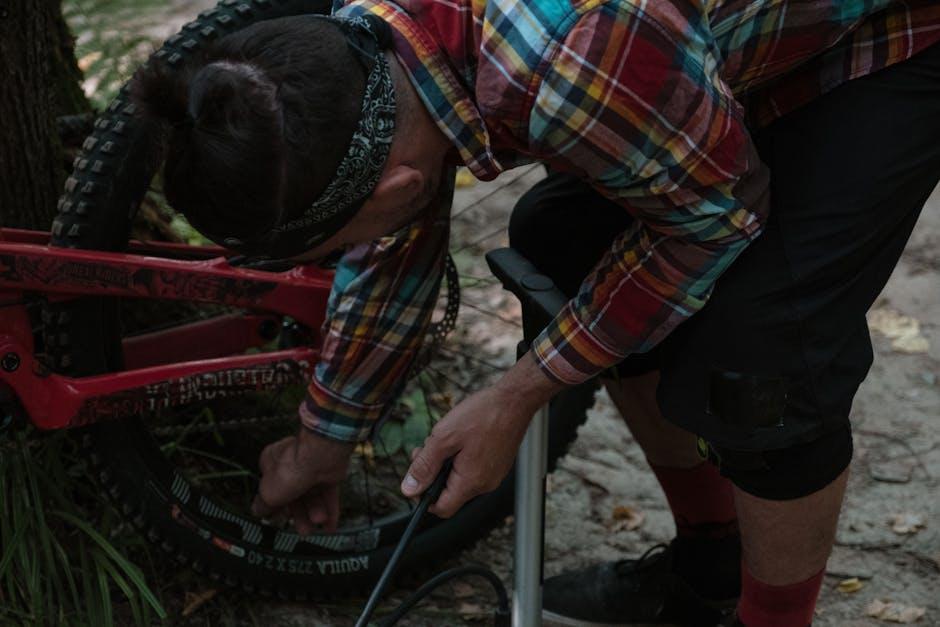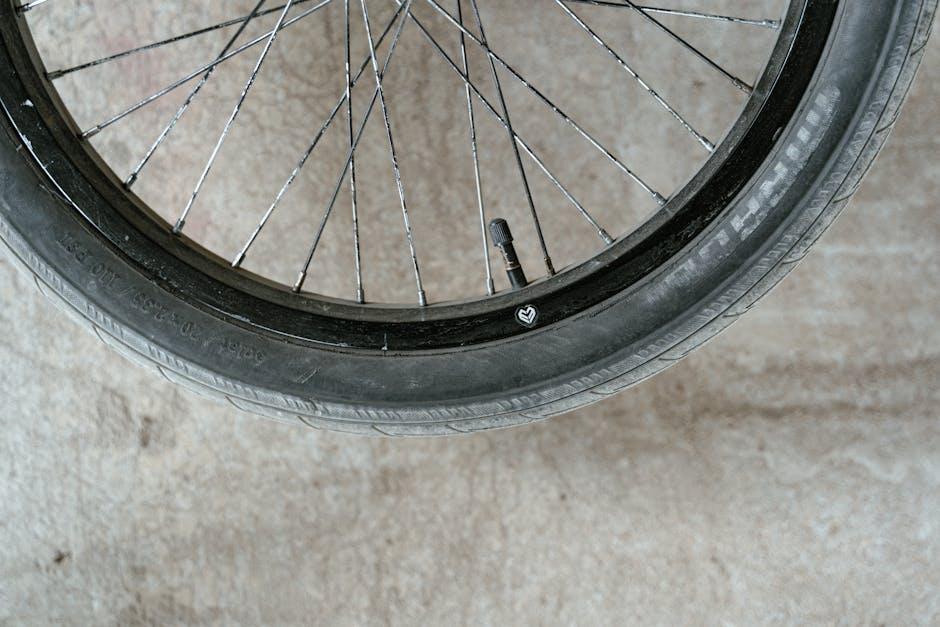Tires are the unsung heroes of every journey, bearing the weight of countless miles while gripping the road beneath us. Yet, despite their importance, they often receive little more than occasional check-ups before being replaced. Extending the life of your tires isn’t just about saving money—it’s about enhancing safety, improving performance, and reducing environmental impact. In this article, we delve into the top tips that can help you get the most out of your tires, turning every ride into a smoother, longer-lasting experience. Whether you’re a daily commuter or a weekend adventurer, these practical insights will keep your wheels rolling farther and stronger.
Table of Contents
- Understanding Tire Wear Patterns for Better Maintenance
- Choosing the Right Tires for Your Driving Conditions
- The Importance of Proper Tire Inflation and How to Check It
- Mastering the Art of Regular Tire Rotation
- Balancing and Alignment Tips to Avoid Uneven Wear
- Seasonal Care and Storage Strategies to Prolong Tire Life
- Q&A
- To Wrap It Up

Understanding Tire Wear Patterns for Better Maintenance
Recognizing the distinct wear patterns on your tires can be a game-changer in preventing costly repairs and ensuring optimal vehicle performance. Center wear, for instance, often signals over-inflation, where excess pressure pushes the tire tread to wear down more rapidly in the middle. Conversely, edge wear points to under-inflation, causing the tire edges to bear excessive load and degrade sooner than expected. Uneven wear, such as cupping or feathering, commonly indicates suspension or alignment issues. By visually inspecting your tires regularly, you can catch these warning signs early and adjust your maintenance plan accordingly.
- Check tire pressure monthly — maintains proper inflation and avoids uneven wear.
- Rotate tires every 5,000–7,000 miles — balances wear across all tires.
- Inspect alignment — misaligned wheels cause rapid, uneven tread damage.
- Monitor suspension health — worn shocks or struts can lead to irregular wear.
| Wear Pattern | Probable Cause | Recommended Action |
|---|---|---|
| Center Wear | Over-inflation | Deflate to recommended PSI |
| Edge Wear | Under-inflation | Inflate to proper pressure |
| Cupping | Suspension issues | Inspect & repair suspension |
| Feathering | Misalignment | Get a wheel alignment |

Choosing the Right Tires for Your Driving Conditions
When it comes to selecting tires, understanding the environment where you’ll be driving most often is crucial. Different tires are engineered to perform optimally under specific conditions, so matching your tires to your regular terrain can significantly enhance their lifespan. For example, all-season tires are versatile for varied climates but may wear faster if used heavily on rugged mountain roads. Conversely, summer tires excel in warm, dry conditions but deteriorate quickly in cold or snowy weather. Investing in tires tailored to your driving environment not only preserves tread life but also improves safety and fuel efficiency.
Consider these factors when choosing your tires:
- Climate: Snow, rain, heat – pick tires designed to handle these elements.
- Road Type: Highways, city streets, or off-road paths require different tread patterns.
- Driving Style: Aggressive acceleration or gentle cruising impacts tire wear rates.
| Driving Condition | Recommended Tire Type | Lifespan Estimate |
|---|---|---|
| Urban Streets | All-Season | 50,000 miles |
| Mountain Roads | All-Terrain | 40,000 miles |
| Highway Cruising | Touring | 60,000 miles |
| Winter Conditions | Winter/Snow Tires | 30,000 miles |

The Importance of Proper Tire Inflation and How to Check It
Maintaining the correct tire pressure is more than just a routine task—it’s a vital practice that directly influences your vehicle’s performance, fuel efficiency, and overall safety. Under-inflated tires create excessive heat due to increased friction, leading to premature wear and a higher risk of blowouts. Conversely, over-inflated tires can cause uneven tread wear and reduce traction, compromising handling on wet or slippery surfaces. By ensuring your tires are inflated to the manufacturer’s recommended pressure, you’re not only extending their lifespan but also optimizing every journey in terms of control and comfort.
Checking tire pressure regularly is quick and simple with the right tools. A reliable tire pressure gauge is essential, and many service stations also offer air pumps with built-in gauges. For best results:
- Measure pressure when tires are cold, ideally before driving.
- Refer to your vehicle’s manual or door jamb sticker for recommended psi (pounds per square inch).
- Adjust air levels accordingly—add air if under-inflated, or release if over-inflated.
Below is a quick guide to ideal tire pressures for different vehicle types:
| Vehicle Type | Typical Tire Pressure Range (psi) |
|---|---|
| Compact Cars | 30 – 35 psi |
| SUVs & Crossovers | 32 – 38 psi |
| Light Trucks | 35 – 40 psi |

Mastering the Art of Regular Tire Rotation
Maintaining even tread wear is crucial for maximizing your tires’ lifespan, and the best way to achieve this is through a systematic approach to tire rotation. By periodically switching the position of each tire on your vehicle, you ensure that they wear out evenly, balancing the load and stress exerted on each. This process not only prevents premature tire replacement but also enhances road grip and fuel efficiency. A general rule of thumb is to rotate your tires every 6,000 to 8,000 miles, but always consult your vehicle’s manual for manufacturer-specific recommendations.
When rotating, consider these key points to optimize results:
- Follow the recommended rotation pattern based on drive type—front-wheel, rear-wheel, or all-wheel drive.
- Inspect tires for uneven wear, punctures, or damage during rotation.
- Check and adjust tire pressure to the optimal level after rotation to maintain uniform performance.
For a clearer understanding, here’s a quick reference table on typical tire rotation patterns:
| Drive Type | Rotation Pattern |
|---|---|
| Front-Wheel Drive | Front tires → Rear; Rear tires → Front (crossed) |
| Rear-Wheel Drive | Rear tires → Front; Front tires → Rear (crossed) |
| All-Wheel Drive | Rear tires → Front; Front tires → Rear (straight) |

Balancing and Alignment Tips to Avoid Uneven Wear
Proper tire maintenance begins with ensuring your wheels are correctly balanced and aligned. When tires are unbalanced, they may cause vibrations at higher speeds, leading to uneven tread wear and stress on your vehicle’s suspension. Similarly, misaligned wheels can cause your tires to wear more rapidly on one edge, reducing their lifespan and compromising safety. Routine checks every 6,000 to 8,000 miles are an excellent habit to keep uneven wear at bay and maintain smooth, safe handling.
To help you stay on track, here are some key points to remember:
- Wheel balancing: Ensures even weight distribution around the tire, preventing vibration and irregular wear.
- Wheel alignment: Adjusts the angles of the wheels to the manufacturer’s specifications for optimal contact with the road.
- Regular inspections: Checking alignment after hitting potholes or curbs keeps wear patterns uniform.
- Professional service: Trust certified technicians to perform balancing and alignment with modern equipment.
| Maintenance Action | Recommended Interval | Benefit |
|---|---|---|
| Wheel Balancing | Every 6,000-8,000 miles | Prevents vibration and uneven tread wear |
| Wheel Alignment | Annually or after impact | Maintains safe handling and uniform tire wear |

Seasonal Care and Storage Strategies to Prolong Tire Life
As the seasons change, so do the demands on your tires. Properly adapting your care routine to align with seasonal shifts can dramatically extend their lifespan. For instance, when winter approaches, switching to winter tires or ensuring all-season tires maintain sufficient tread depth is crucial for optimal grip and safety. After winter, a thorough cleaning removes corrosive salt and grime, preventing premature wear. Additionally, storing off-season tires in a cool, dry place away from direct sunlight and ozone sources like electric motors preserves their rubber composition, keeping them pliable and effective when you need them again.
Implementing these seasonal strategies also means sticking to certain key practices:
- Inspect tires monthly for cracks or irregular wear
- Maintain recommended tire pressure adjusted for temperature fluctuations
- Rotate tires regularly to ensure even wear across all four
- Use tire covers during long-term storage to protect from UV damage
| Season | Care Focus | Storage Tip |
|---|---|---|
| Winter | Use winter tires or check tread depth | Store summer tires indoors |
| Spring | Clean off salt and debris | Inspect for winter damage |
| Summer | Check for overheating and proper inflation | Rotate and balance as needed |
| Fall | Prepare tires for colder temps and check pressure | Store winter tires in cool, dry place |
Q&A
Q&A: Top Tips for Extending Tire Life
Q1: Why is it important to extend the life of my tires?
A1: Extending tire life helps you save money by reducing the frequency of replacements, improves safety by ensuring better traction and handling, and benefits the environment by minimizing waste.
Q2: What is the most effective way to prevent premature tire wear?
A2: Regular tire maintenance is key—this includes checking and maintaining proper tire pressure, rotating tires regularly, balancing wheels, and aligning your vehicle’s suspension.
Q3: How often should I check my tire pressure?
A3: Ideally, check tire pressure at least once a month and before long trips. Tires naturally lose air over time, and maintaining the recommended pressure ensures even wear and optimal performance.
Q4: Does driving style affect tire longevity?
A4: Absolutely. Smooth acceleration, gentle braking, and avoiding aggressive cornering can significantly reduce tire wear. Hard driving styles put extra stress on tires, leading to faster deterioration.
Q5: How does tire rotation help and how often should I do it?
A5: Tire rotation promotes even wear by switching tires from one position to another. This balances the wear patterns since front and rear tires often wear differently. Typically, rotate tires every 5,000 to 7,500 miles.
Q6: What role does wheel alignment play in tire life?
A6: Proper wheel alignment ensures your tires meet the road at the right angle and your vehicle tracks straight. Misalignment causes uneven wear on one edge of the tire, shortening its lifespan.
Q7: Can underinflated or overinflated tires damage tires?
A7: Yes. Underinflated tires wear out on the outer edges and can overheat, while overinflated tires wear down the center tread and reduce grip. Both conditions compromise safety and tire longevity.
Q8: Are all tires created equal in terms of lifespan?
A8: No. Tire lifespan varies by brand, type, and intended use. Touring tires often last longer than high-performance tires, and all-season tires typically outlast summer tires. Checking manufacturer treadwear ratings can guide expectations.
Q9: What environment factors should I consider?
A9: Extreme temperatures, rough roads, and exposure to harsh chemicals or direct sunlight can accelerate tire aging. Parking in shaded areas and avoiding potholes help preserve tire integrity.
Q10: When is it time to replace tires even if tread looks okay?
A10: Tires have a recommended service life, usually around six years. Even if tread seems sufficient, rubber degrades over time, causing cracks and reducing safety. Regular inspections by a professional are essential.
Q11: Any quick daily habits to extend tire life?
A11: Simple daily habits include avoiding sudden stops or sharp turns, checking tire condition visibly for cuts or bulges, and being mindful of load limits. Consistency fosters longevity.
Q12: Is investing in quality tires worth it for longevity?
A12: Generally, yes. Premium tires often feature advanced compounds and designs that resist wear better. Though the upfront cost is higher, the extended lifespan and improved safety can offset the price difference.
By incorporating these top tips into your routine, you can maximize the lifespan of your tires, ensuring safer drives and smarter spending!
To Wrap It Up
Extending the life of your tires is more than just a maintenance task—it’s an investment in safety, performance, and savings. By adopting a few simple habits like regular pressure checks, mindful driving, and timely rotations, you not only protect your tires but also enhance your overall driving experience. Remember, every mile adds up, and with the right care, your tires can take you farther, smoother, and smarter. So, treat your tires well—they’re the silent partners that keep you rolling.


5 Comments
9c0ldo
9c0ldo
jnmvyl
jqx7z6
jo1zy2